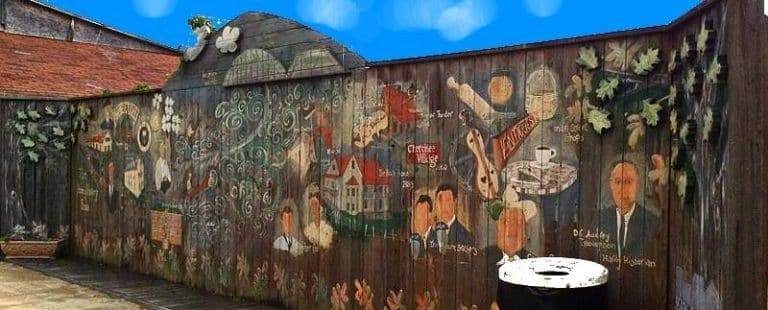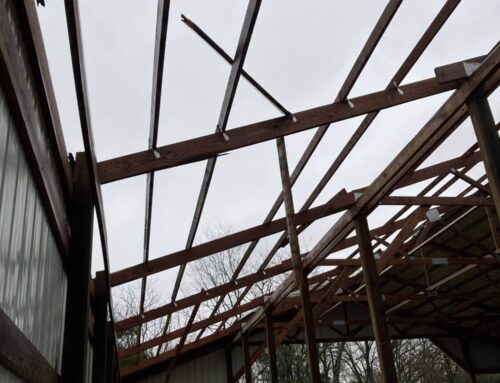Source: SRACC, Information Guide
Prior to 1880, Hardy did not exist. Only a few families lived in this heavily timbered area, and not until the completion of the railroad did the boom times come. Thanks to the railroad, much was needed – a water tank to service locomotives, a station to take on and unload passengers and freight, housing for its employees, and various other services. The town of Hardy was officially founded in 1883, and was named for James A. Hardy, Jr., a 25-year-old trackage subcontractor who saved his boss’s life.
In 1894, Hardy was made County Seat of Sharp County’s Northern District, with Evening Shade being County Seat of the Southern District. The present County Seat is Ash Flat, established when the two districts were combined in 1967.
Hardy’s population remained around 50 for the first 10 years of its existence; by 1900 the population had grown to about 600 residents.
The first substantial businesses were not established until the 1890’s and 1900’s. Those were the ‘general stores’ where you could find anything from food to pots and pans to hardware. By 1920, businesses occupied almost two blocks on Main Street. Those included general stores, hotels, general merchandise establishments a private telephone company, a Ford automobile agency, two cafés, a bank, two drug stores, two livery stables, a jewelry store, an ice plant, a feed store, two lumber companies, a wholesale grocer, a livestock sale barn, and the Court House.
The lifestyle in Hardy remained about the same until the late 1970’s. At that time, some businesses began to move out of town to other areas; however, what brought about the drastic change in Hardy was the flood of 1982. This devastating event flooded to the roof of the grocery store in town, and most of the other stores were badly damaged. After the flood, most of the businesses moved to the Highland area – and that’s when the craft and antique shops began to open in the historic buildings on Main Street.
Today, Hardy retains its ‘old town’ flavor. The downtown area looks much like it did during the Model-T days…and the merchants want to keep it that way! Most of the modern changes have occurred at the ends of town, leaving the heart of Main Street a tiny preserve for quality antique shops, craft stores, specialty shops and gift nooks. The cool, clear waters of Spring River, a favorite of tourists for decades, flow just one block off Main Street, offering swimming, excellent fishing, and canoeing.
The idea for the Old Hardy Town mural, located at the corner of Spring and Main Streets, came about when Kenneth King had a wish to donate something of lasting value to the town that had been so good to him and his family since he started his business in 1963. In the summer of 1992, in an effort to preserve a part of Hardy’s rapidly vanishing heritage, Mr. King commissioned two artists, Ernie Patton and Kermit Kroll, to paint a panorama of five long-gone landmarks on an outside brick wall. The mural is approximately 80 feet long and 23 feet high.
One of the five scenes depicted on the mural is the Frisco Railroad Depot which stood in Hardy from the 1920’s to the 1970’s. During those years, the depot served as a social gathering place and business location. On Sundays after church, young people would say, “Lets go to the station and watch the train come in.” Unfortunately, after the dwindling of rain service in the 1970s, the depot was razed and this brought regret to area residents.
Another of the landmarks is the old gas station (Oct. 1, 1917 – July 13, 1973). The station was located between the railroad tracks and the Spring River bridge. This service station did more business than all other Hardy service stations combined. It weathered two bad floods, but the third one put it out of business.
The Old Iron Bridge spanned Spring River from the time it was built in 1916 until it was totally destroyed by the devastating flood in 1982. Untold numbers of wagons, people and cars made their way across the structure before it washed away. Truly a focal point of the area, generations of Hardyites had great pride in and affection for the old bridge. It had a simple grace and beauty that appealed to the eye and heart.
Wahpeton Hill, which is on the south side of Spring River opposite Hardy’s business district, was once wooded hills where Memphians came to enjoy the peace and quiet during the early part of the century. In the language of the Indians, Wahpeton meant, “home among the leaves”. Below Wahpeton Hill, the fields along the river were the scene of annual Indian Olympic Games. In 1932, Judge Frank Guthrie bought Wahpeton Hill and several hundred acres. Mrs. Guthrie immediately started plans for the construction of Wahpeton Inn. The Inn was opened formally in the summer of 1933. It was built entirely of native stone; the floors of the lobby and living room and the outside terraces were made of flagstone. All the furniture except the beds were constructed of native oak. Much entertainment was offered: an orchestra, family style meals, coffee shop, bowling alley, shuffleboard court and a dance floor in the pavilion. The Inn was burned on November 13, 1939. Although much effort was expended in an attempt to save the beautiful inn, it burned to ashes and sadly was never rebuilt.
The Beck House was built in 1885 by John Elmer Beck, a railroad man from Springfield, Missouri. It was built of the finest materials and with elegant furnishings, many purchased in Memphis. Over the years, the Beck farm served as the center of community attractions. The riverside area provided a primitive golf course, and during the 1920’s and ‘30s, the farm was the site of an annual circus that entertained the people from all over Northern Sharp County. Teresa Beck, one of the six children of John Beck, married a Mr. Donaldson, one of the Hardy’s depot agents. Mrs. Donaldson, affectionately known as “Aunt Tee”, lived in the house until her death in 1980. In 1992, the house was demolished because it had become too dilapidated to repair. What was our “Bonanza” restaurant is near the site of the old house.






